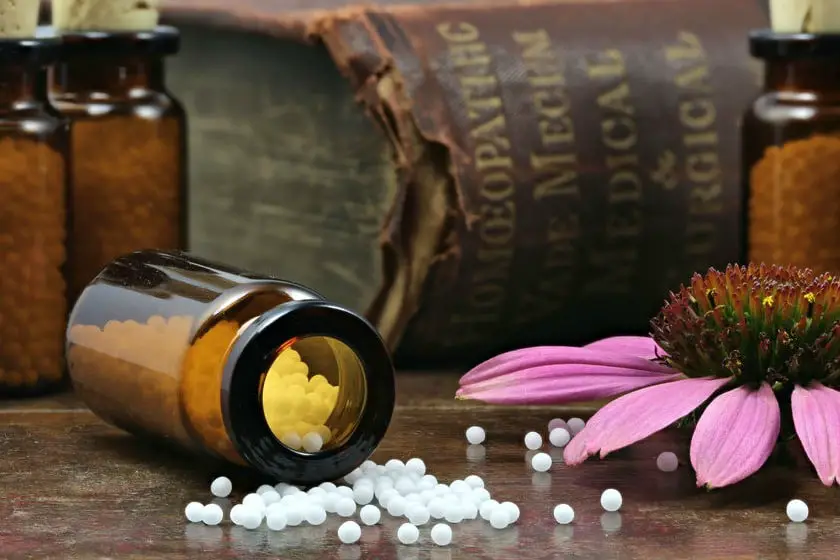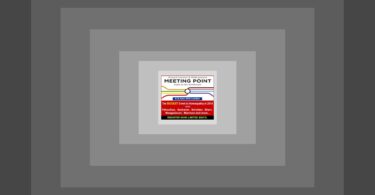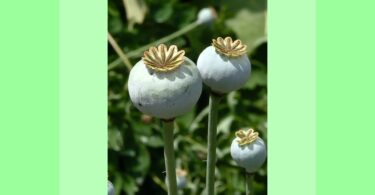One of our Poll Questions (“Do remedies need to clear out of your system before another prescription can be made?”) was suggested by me in response to “Joshua’s Case”. Joshua’s father, Michael Dym, was advised by one of our readers that Joshua had received so many remedies that it was essential for him to wait a decent period before trying anything new. This is why we haven’t heard any follow-ups regarding Joshua’s Case.
So here are the poll results:
1. Yes, remedies have to clear out of your system first — 17% (65 votes)
2. No, remedies don’t have to “clear out” first — 23% (91 votes)
3. It depends on the potency — 11.8% (45 votes)
4. It doesn’t matter — 42.7% (163 votes)
5. Start a chronic case with LM1 — 4.7% (18 votes)
Total number of votes: 382
The first thing we should do is distinguish between acute cases and chronic cases. When we give a remedy in an acute case, the remedy that acts will be used up quickly because the energy exerted by the acute complaint consumes the remedy. If a remedy does not act quickly in an intense acute, it is incumbent upon us to keep trying. The right remedy always works regardless of how many incorrect remedies came before it. Here is a comment typical of those that support this view:
If you are dealing with an acute situation, then why wait if there is no response? Remedies in such cases can be repeated and changed as the immediate situation evolves. Deeper acting remedies, or miasmic treatment may need to be given time, but only in constitutional or long-term treatment. If a patient’s immediate suffering is not being alleviated, then why wait?
Fiona
Keep in mind that an acute that has lasted a week or two is not going to resolve within minutes the way a sudden or recent acute will.
The potency you use should have some relationship to the intensity of the complaint. Take a cough that’s lasted for two weeks, a prescription like “Phosphorus 30C 4 times a day for three days, stop and wait if there’s an improvement, redose if there’s a relapse, stop if there’s an aggravation” is an appropriate, responsible prescription.
Most likely an improvement will be noticed by or before the next day. A single dose of a 200C can also be given and again, by the next day usually, if it’s the right remedy, an improvement should be seen. No need to repeat the 200C unless there’s a relapse.
Intense pain or discomfort may well require a higher potency, and the more intense the symptom, the sooner you expect the right remedy to act, even if the case is of long-standing.
The problem comes in chronic cases. High potencies are generally given in a single dose. It is now incumbent upon us to wait — God only knows how long. This leads to speculation about what is going on, since it’s all pure conjecture! “Where is the remedy? Is it ‘there’? Lying dormant? Waiting? Silently working? Can it be antidoted unbeknownst to me, if I drink coffee or use an electric blanket? How long should I wait before I give up and try something else?”
Here’s a comment by a reader who says that she has waited months:
I know from my own experience (with MY body) that a remedy can appear to lie dormant for several months and then suddenly act wonderfully on the body–certainly a 10M can do so. I experienced it.
For that reason, I had to vote yes to the first possibility, though I also agree with the third!
I don’t know about a remedy that is poorly chosen, i.e. not homeopathic to the person, but certainly a WELL-chosen remedy CAN lie dormant.
Teresa Kramer
Teresa’s comment must certainly give us pause! When is it safe to redose in a chronic case if this is true? According to Hahnemann in the 6th edition of The Organon, this kind of schedule — waiting months — is not ideal! Here’s what he says in aphorism 246:
“If the disease is somewhat chronic, however, a single dose of the appropriately chosen homeopathic medicine does sometimes complete the good that that remedy can according to its nature accomplish in the case, but slowly, over a period of forty, fifty, sixty or one hundred days. Now, for one thing this is very rarely the case, and, secondly, it must be a matter of great importance to the physician and to the patient to reduce this period by half or three-quarters or more, if possible, to obtain a far more rapid cure.”
He’s saying that we’ve got to do better! You can’t put a patient on hold for three months and I don’t know of many patients who will sit and wait for that period of time! This sentiment was echoed in a comment made by Caralyn:
Patience is not my virtue. When a remedy is not working, it’s not working. If one has to wait too long, homeopaths are going to lose their clients. If you need to wait months to see if a remedy is working, all the while suffering, people are going to switch to alternative methods. That is human nature. Certainly that would be my nature. It seems that LM’s are more cut and dry. When they work it is more obvious.
Caralyn
So, you see, herein lies the issue of practicality; also the solution, which Caralyn touches on at the end: the LM potencies! These potencies work fast, according to Dr. Luc De Schepper! In a few days to a week on LM/1, if you don’t see a response, try another remedy. LM’s are powerful like high potencies but with a short lifespan like the lower C potencies so you can have confidence about where you are in a case! There’s less guessing, as in, what has happened to the remedy, is it still there, lying in wait? Is it gone? Should I “antidote” so I can start a new remedy? We can, at last, dispense with all the speculation. In fact, I am happy to announce that this is now officially the “state of the art” prescribing method. How do I know? The new issue of Homeopathy Today features a case in the Guest Editorial column by Ken Silvestri, RSHom, CCH. Here, at last: 6th edition Organon prescribing goes mainstream:
“…George had prided himself on always being regular. Since his constipation began, he had consulted four gastroenterologists with little improvement. He came to me through a referral from a friend. Wearing a dearly loved but well-worn sweater, George appeared disheveled. He exhibited hyposensitivity (a high tolerance for medications) and many egocentric traits. These characteristics, along with his grief, bilious temperament, and a general aggravation from bathing in hot water, pointed to the homeopathic remedy Sulphur.
“I gave George a four-ounce liquid bottle of Sulphur LM/1 to be succussed or shaken vigorously before taking a one-tablespoon dose. I asked him to start by taking just one tablespoon as a test dose and to call in a few days.
“George called to report ‘wonderful’ results–normal bowel movements all described in gleeful detail with many exclamations of ‘God bless you!'”
What we’ve just seen here is the ultimate in responsible, by-the-book, prescribing! After ONE DOSE of LM/1, in a few days, this patient had results! There was no aggravation to have to make excuses for, no proscriptions against “antidoting factors” like coffee and mint toothpaste, no list of do’s and don’t’s and explanations about the need to wait a month. Fast results like this are what people expect when they go to a doctor!
Please keep in mind that there is a right way to prepare and administer LM’s and the above practitioner really knows what he’s doing! For the rest of you, here it is:
HOW TO PREPARE, AND TAKE, AN LM
1. Buy a small bottle of spring water, an 8 ounce bottle if you can find one. We will refer to this bottle as the Remedy Solution Bottle, or, RSB for short.
2. Pour out half of the spring water bottle so you’ll have a four ounce bottle of water (you might want to save the water though, don’t pour it down the drain).
3. Drop in one, at the most two, pellets of your LM/1 into the RSB. It can really be challenging to do this because the pellets are so tiny! So, what I do is tap the bottle into a plastic spoon and a number of pellets fall out. I jiggle the spoon until all the pellets fall off into the sink except a few, then it is easy to isolate one, push the others off the spoon, and slide the remaining pellet into the bottle of water. If your LM came in a liquid dropper bottle, drop one drop into the RSB, though it is really a mistake to order LM’s in a liquid bottle. Ask for the pellets, not the liquid.
4. Shake up the RSB.
5. Now you’ll need a disposable cup. We call this the Dosage Cup, or DC for short. The dosage cup should be half filled with water (four ounces again; that’s half a cup).
6. Pound the RSB into your opposite palm (this is called “succussing”) 10 times.
7. Pour a teaspoonful–use a plastic spoon; everything should be disposable — into your dosage cup, a tablespoon if you are hyposensitive. Stir the DC with a plastic spoon or straw. Take a teaspoon or tablespoon sip from the dosage cup and pour out the rest. .
8. Put the RSB into the refrigerator.
9. The next day, repeat steps 6-8 if there’s been no striking improvement.
10. When the bottle is empty, start a new bottle for the LM/2 potency which you should order right away as soon as you know the LM/1 is working. Don’t use the same RSB! Buy a new bottle.
11. Any striking improvement precludes the need for further dosing, unless you relapse.
12. If there’s an aggravation, stop and wait. When it wears off there should be an improvement. If no improvement is in evidence, it may be the wrong remedy or the right remedy but “out of order” (another remedy should have come first). If there IS an improvement, when the aggravation wears off make your next dose more dilute, meaning get a larger dosage cup with more water in it, cut your succussions in half and make your dose half a teaspoon–hopefully these measures will prevent further aggravations.
13. If an old symptom comes back, or something seeming like an acute comes out, stop the remedy and let your homeopath know. If it’s uncomfortable, an acute remedy can be given, otherwise, these seeming “acutes” go away on their own and you should feel better after them.
_______________________________
Here to sum up is reader Marilyn Freedman:
In an acute situation we certainly would not wait for a remedy to “clear out of your system” before another prescription can be made. We wait for moments only to see if there is improvement. Moments, minutes – no longer, in some cases. So, while each of the answers to the question may be correct given the individuality of each case, the most correct approach, in my experience, is (d) It does not matter, and (e) start a chronic case with LM potencies or minimal dosage in C potencies.
And if I can expand on what Marilyn has just said, use your 6C’s exactly as you would an LM, preparing it as stated above, and when the 6C Remedy Solution Bottle is done, go to 7C, and then 9C and then 12C and then 15C, etc. and you will get very similar results to the LM’s. Remember, this is for chronic cases. The lower potencies are “used up”, consumed, by the complaint so that you don’t have to wonder, “When should I repeat the remedy?” A striking improvement precludes further dosing. Barring a striking improvement, a 6C is generally given 2 to 4 times a day, a 9C twice a day, a 12C once a day, a 15C once a day. Of course, this protocol has to be tailored to accommodate the response of the patient. Thanks to all who shared their comments!
__________________________
Elaine Lewis, DHom, CHom
Elaine takes online cases, write to her at [email protected]
Visit her website: https://ElaineLewis.hpathy.com







for a chronic case what can it mean then if it took a good 3 months before i felt any difference and then slowly from then on i felt better tho not cured?
It means your immune system is slow to react, depressed; possibly, I’m guessing, from a lifetime of suppressive drug treatments for one thing or another.
Hello,
In the case of a 3.5 year old that has swollen adenoids, after following a treatment of one remedy can I switch to a different remedy in less than a month, since most symptoms were not cured by the first remedy? Will the second remedy work?
Anna, for complicated case-management issues, it would be best if you emailed me and even better if you had an actual homeopath to assist you in case management.
After antidoting a remedy with mint when I the best time to redose
If you’ve antidoted, and the antidote actually worked, then you redose as soon as you discern a remedy picture.